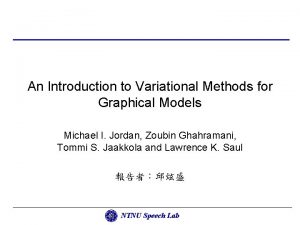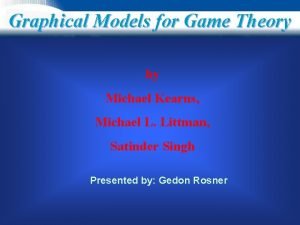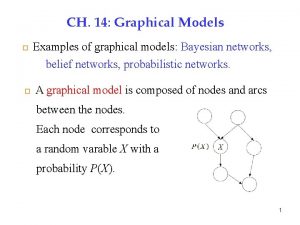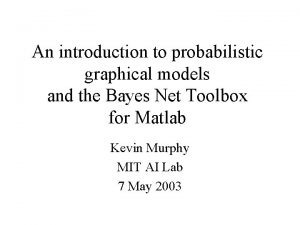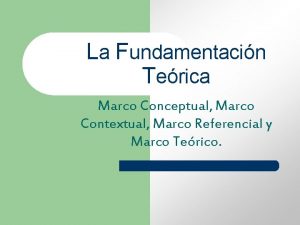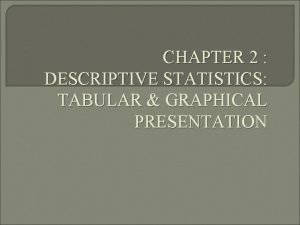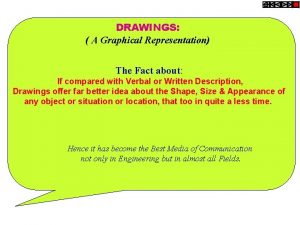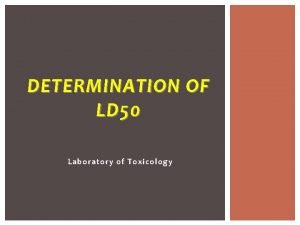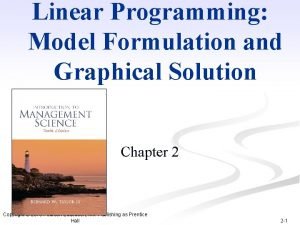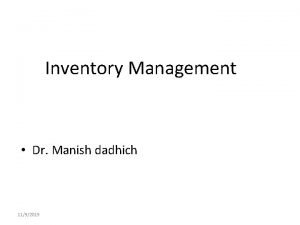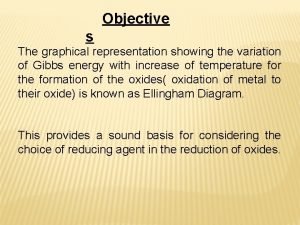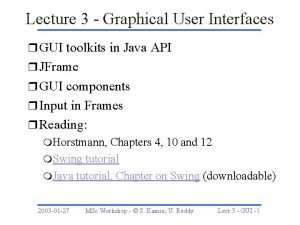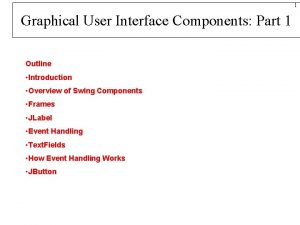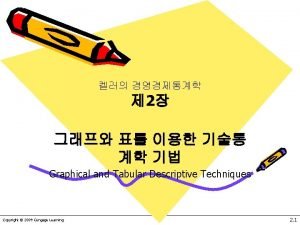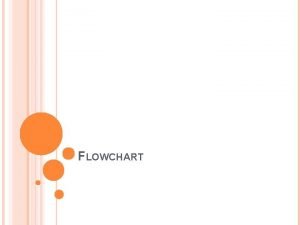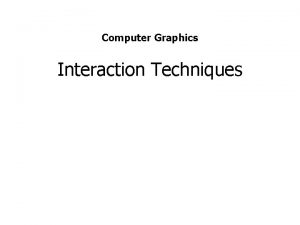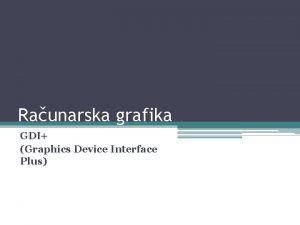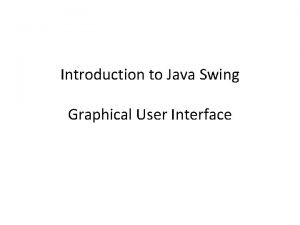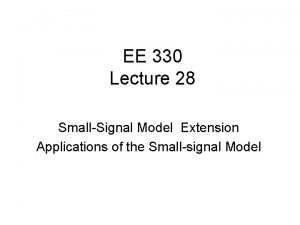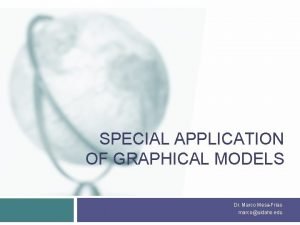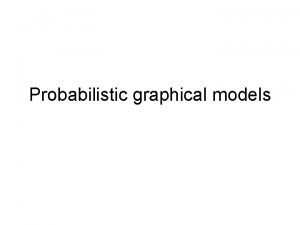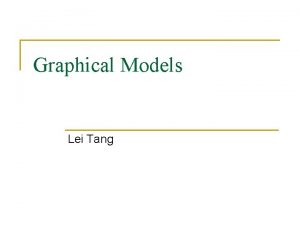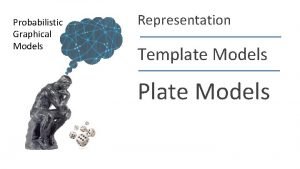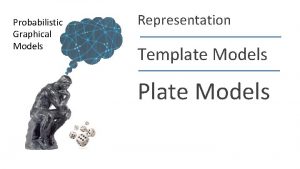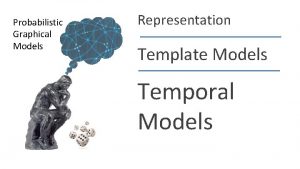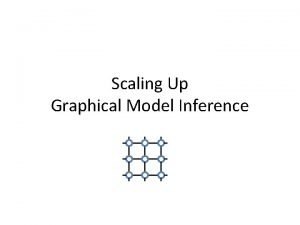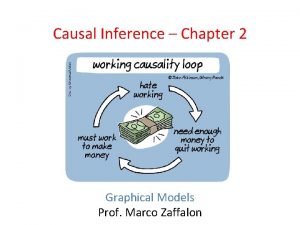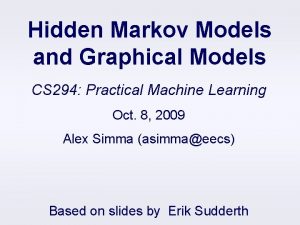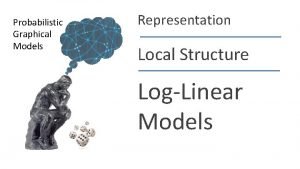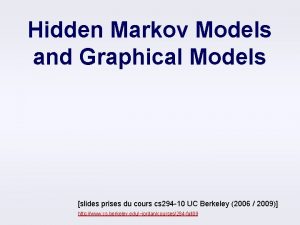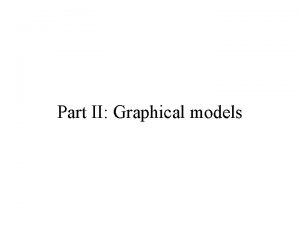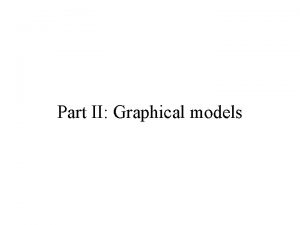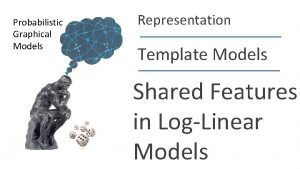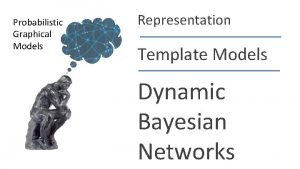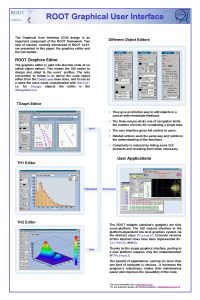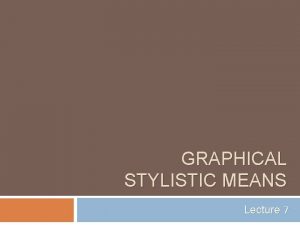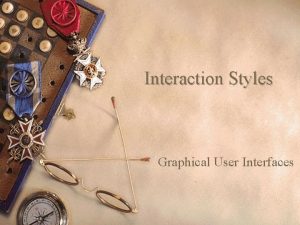Intro to Graphical Models Dr Marco MesaFrias marcouidaho







































- Slides: 39

Intro to Graphical Models Dr. Marco Mesa-Frias marco@uidaho. edu

Aims of the course › To familiarize you with graphical models and concepts › To give you an overview of uses of graphical models › To give you an idea of the techniques used in graphical modeling

What Are Graphical Models? Stat Model Graph M Data D ´ f X 1( i ) ; X (i) N 2 ; : : : ; X m g i=1

Useful Variables Stat Model Graph Relationships Formalize

What Graphical Models are useful for › Allow structural inferences › Simplify complex relationships › Formalize relationships between variables › Allow parametric inference

Communication › Graphical models make communication easier › Imagine you have a complex problem with many variables › You want to explain to another person how they are related › You can write a list, or a paragraph describing this OR › You can draw a graph › It also help to understand statisticians

Reasoning under uncertainty › Graphical models have become an extremely popular tool for modeling uncertainty. › They provide a principled approach to dealing with uncertainty through the use of probability theory, and an effective approach to coping with complexity through the use of graph theory.

The Fundamental Questions to deal with Uncertainty Representation How to capture/model uncertainties in possible worlds? How to encode our domain knowledge/assumptions/constraints? Inference How do I answers questions/queries X? 9 according to my model and/or based given data? e. g. : P( X i | D ) X 8 Learning ? ? X 1 e. g. : M arg max F (D ; M ) M M X 7 X 6 What model is "right" for my data? ? X 2 X 3 X 4 X 5

Recap of Basic Prob. Concepts Representation: what is the joint probability dist. on multiple variables? P( X 1 , X 2, X 3 , X 4, X 5 , X 6, X 7, X 8) A How many state configurations in total? --- 28 Are they all needed to be represented? Do we get any scientific/medical insight? B C D E F G H Learning: where do we get all this probabilities? Maximal-likelihood estimation? but how many data do we need? Are there other est. principles? Where do we put domain knowledge in terms of plausible relationships between variables, and plausible values of the probabilities? Inference: If not all variables are observable, how to compute the conditional distribution of latent variables given evidence? Computing p(H|A) would require summing over all 26 configurations of the unobserved variables 9

So What is a Graphical Model? In a nutshell: GM = Multivariate Statistics + Structure

Graphical modelling – Modern Statistical Framework Mathematics Algorithms Inference 11

1. Mathematics Algorithms Inference 12

Conditional independence X and Z are conditionally independent given Y if, knowing Y, discovering Z tells you nothing more about X: p(X|Y, Z) = p(X|Y) X Y Z 13

Conditional independence as seen in data on perinatal mortality vs. antenatal care…. Does survival depend on antenatal care? . . what if you know the clinic? 14

Conditional independence survival ante clinic survival and clinic are dependent and ante and clinic are dependent but survival and ante are CI given clinic 15

Graphical models Use ideas from graph theory to › represent structure of a joint probability distribution › by encoding conditional independencies C D F B E A 16

C D F B A E Conditional independence provides a mathematical basis for splitting up a large system into smaller components 17

C D D F B B E E A 18

Two types of Graphical Models Directed edges give causality relationships (Bayesian Network or Directed Graphical Model): Receptor A X 1 Kinase C X 3 Receptor B Kinase D TF F Gene G X 7 X 2 Kinase E X 4 X 5 X 6 X 8 Gene H Undirected edges simply give correlations between variables (Markov Random Field or Undirected Graphical model): Receptor A X 1 Kinase C X 3 Receptor B Kinase D TF F Gene G X 7 Kinase E X 4 X 6 Gene H X 2 X 8 X 5

2. Algorithms Mathematics Algorithms Inference 20

Algorithms for probability and likelihood calculations Exploiting graphical structure: › Markov chain Monte Carlo › Bayesian Networks (probability propagation) Graph representation used in user interface, data structures and in controlling computation 21

Markov chain Monte Carlo ? Updating ? - need only look at neighbours 22

Probability propagation (Bayes Nets) A P(A) A B P(B|A) false 0. 6 false 0. 01 true 0. 4 false true 0. 99 true false 0. 7 true 0. 3 B C P(C|B) false 0. 4 false true 0. 6 true false 0. 9 true 0. 1 Each node Xi has a conditional probability distribution P(Xi | Parents(Xi)) that quantifies the effect of the parents on the node The parameters are the probabilities in these conditional probability tables (CPTs) A B C D B D P(D|B) false 0. 02 false true 0. 98 true false 0. 05 true 0. 95

3. Inference Mathematics Algorithms Inference 24

Bayesian 25

or non. Bayesian 26

Bayesian paradigm in structured modelling › automatically integrates out all sources of uncertainty › properly accounting for variability at all levels › including, in principle, uncertainty in model itself › avoids over-optimistic claims of certainty 27

Rational Statistical Inference The Bayes Theorem: Likelihood Posterior probability p(h | d ) Prior probability p(d | h) p(h) p(d | h ) p(h ) h H Sum over space of hypotheses This allows us to capture uncertainty about the model in a principled way

Probabilistic Graphical Models If Xi's are conditionally independent (as described by a PGM), the joint can be factored to a product of simpler terms, e. g. , A X 1 C X 3 B B D F G X 7 X 2 E X 4 X 6 H P(X 1, X 2, X 3, X 4, X 5, X 6, X 7, X 8) X 5 = P(X 1) P(X 2) P(X 3| X 1) P(X 4| X 2) P(X 5| X 2) P(X 6| X 3, X 4) P(X 7| X 6) P(X 8| X 5, X 6) X 8 Why we may favor a PGM? Incorporation of domain knowledge and causal (logical) structures an 8 -fold reduction from 28 in representation cost ! Bayesian Philosophy Knowledge meets data

Application of Graphical Models Machine Learning Computational statistics Epidemiology Computer vision and graphics Natural language processing Informational retrieval Robotic control Decision making under uncertainty Error-control codes Computational biology Genetics and medical diagnosis/prognosis Finance and economics Etc.

THANK YOU…

THANK YOU…. . 32

Title and Content Layout with Chart Category 4 Category 3 Category 2 Category 1 0 2 4 6 Series 1 Series 2 8 Series 3 10 12 14

Two Content Layout with Table › First bullet point here Group A Group B Class 1 82 95 › Second bullet point here Class 2 76 88 › Third bullet point here Class 3 84 90





 An introduction to variational methods for graphical models
An introduction to variational methods for graphical models Graphical models for game theory
Graphical models for game theory Qm for windows
Qm for windows Graphical model examples
Graphical model examples An introduction to probabilistic graphical models
An introduction to probabilistic graphical models Concepto de marco contextual
Concepto de marco contextual Difference between models and semi modals
Difference between models and semi modals Persamaan simultan
Persamaan simultan Graphical weather forecast
Graphical weather forecast Graphical screen design
Graphical screen design Graphic elements poem
Graphic elements poem Graphical abstract example
Graphical abstract example Goodrich method
Goodrich method Idscenter
Idscenter Descriptve
Descriptve Web user interface characteristics
Web user interface characteristics Graphical aviation weather
Graphical aviation weather Third angle projection method
Third angle projection method Miller and tainter method
Miller and tainter method Lp model formulation example
Lp model formulation example Fsn analysis
Fsn analysis History of graphical user interface
History of graphical user interface Graphical representation of shm
Graphical representation of shm Openedge graphical client
Openedge graphical client Salient features of ellingham diagram
Salient features of ellingham diagram Kelebihan metode grafik
Kelebihan metode grafik Programming graphical user interfaces in r
Programming graphical user interfaces in r Principles of user interface design
Principles of user interface design Components of graphical user interface
Components of graphical user interface Tabular and graphical methods
Tabular and graphical methods Limit of economic haul formula
Limit of economic haul formula A graphical representation of an algorithm
A graphical representation of an algorithm Eoq stands for ____
Eoq stands for ____ Input of graphical data in computer graphics
Input of graphical data in computer graphics Graphical device interface with c
Graphical device interface with c The consent elaine kaye
The consent elaine kaye Java user interface
Java user interface Graphical descriptive techniques
Graphical descriptive techniques Graphical analysis
Graphical analysis Crap design
Crap design
